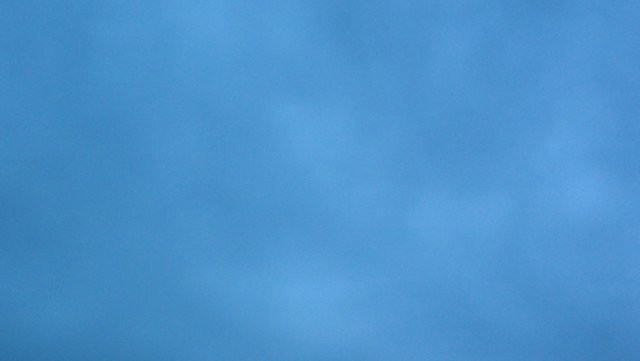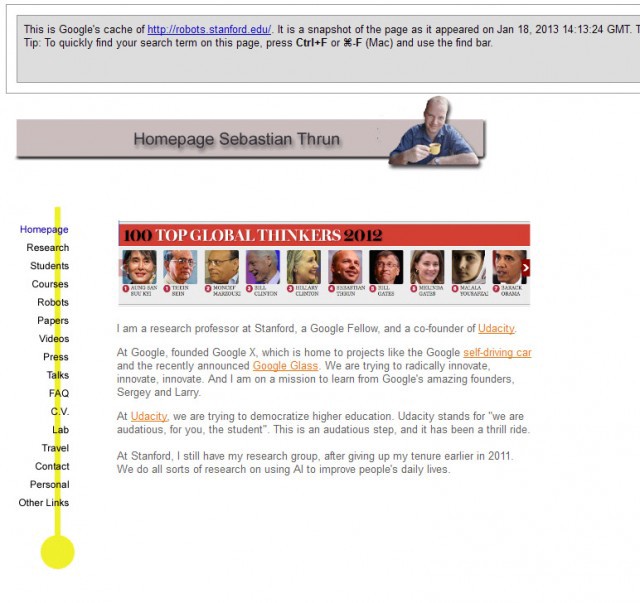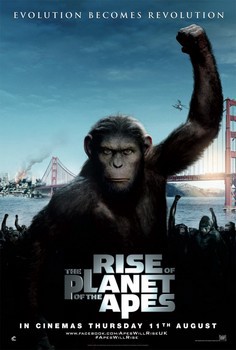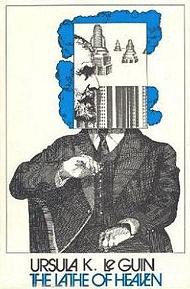Radio's Hero Of The Weird, Art Bell, Announces (Maybe) His New Show

In its 1990s prime, the late-night radio show “Coast To Coast AM” was an unscripted audio mix of “Twin Peaks” and “The X-Files.” It was corny, uncomfortable, laughable, utterly paranoid, completely of its time, and occasionally terrifying. Because it was broadcast in the middle of the night, if you listened it was generally because you were alone: driving a deserted highway, fighting insomnia, cramming for a test, finishing some code, working a graveyard shift.
A parade of crazies appeared every night, people with no apparent sense of humor, explaining the most obscure and ridiculous theories and conspiracies. And then, because this was also the golden age of weird crap on the early World Wide Web, you could look up these dingbats and discover… oh good god, so “Major Ed Dames” is a real retired military officer who really did “remote viewing” for a secret government project called “Stargate,” that’s a real thing? This was always the terrifying part about the show: Some of it, maybe all of it, was true.
Behind it all was exactly the kind of person you would avoid in real life: Art Bell, a chain-smoking hermit and deejay with a creepy knowing laugh who worked from a mobile home compound in the high desert near Area 51, which still doesn’t officially exist, although the federal government eventually conceded there was something related to defense and/or intelligence at the (dry) Groom Lake section of the Nevada nuclear test site north of Las Vegas. And now, a dozen years since he left the weeknight show for good and made a series of increasingly perplexing retirements/comebacks on the little-heard weekend version of the program, Art Bell has announced (on Facebook) that he’s in talks to begin a new radio show, apparently free of the “Coast to Coast AM” corporate overlords at Premiere Radio Networks in Los Angeles. Are the weird times coming back?

It is always vague and mysterious with Art Bell. The man could make anything, including where his cats were hiding in his home studio on any given night, sound like the space monsters had arrived. “Emotional roller coaster” is an overused and hopefully outdated phrase, but it exactly describes the plunge from “Oh for chrissakes, listen to this idiot” to “Lock the doors and turn on all the lights!” that always awaited the Art Bell listener. The transition from voyeuristic hilarity to terror was that quick, and of course that was the reason to keep listening.
Art Bell is tragic proof that fame and fortune certainly don’t guarantee a pleasurable life. He first quit the radio show at the height of its popularity, in 1998, reportedly because some local psychopath had sexually assaulted Bell’s young son with the stated goal of infecting the child with HIV. In 2006, Bell’s third wife died in the couple’s RV parked outside a trashy casino-motel in Laughlin, Nevada, the kind of place where you can still find penny slots and half the clientele drag along portable oxygen canisters. He apparently sat around his Mojave desert compound for a while after the death of Ramona Bell, and then decided to move to the Philippines and marry a girl he met over the Internet. He finally came back to Pahrump, Nevada, but immigration problems kept his fourth wife out of the United States for many years. Bell had a full compliment of health problems when he was still in his 40s, including back injuries from falling off a telephone pole, and his lifetime of chain smoking can’t be making him feel much better.
And yet, for all of his very public foibles and misfortunes, Bell had the best voice on radio and a master’s touch with the callers, guests and soundboard. The show was about suspense, about that one unexpected-yet-expected moment that would scare the listener into another two hours of insomnia, hearing every sound of the house settling as an invasion of sinister entities. To listen during an actual, unfolding freakout was the peak “Coast to Coast with Art Bell” experience: during the 1997 Phoenix Lights incident, for example, as people in Nevada and Arizona called in with eyewitness descriptions of the gigantic black craft moving silently over highways and exurbs, or as a Texan calling from a small plane claims he’s flying into Area 51, or the convincingly frantic “former employee” from the fabled Dreamland base with its subterranean halls of escaped interdimensional beings.
The nightly show continues without Bell, and is apparently more popular than ever. In the 21st Century version you can hear tonight, the host is a genial radio veteran named George Noory. Because he’s relatively normal sounding on the air, he brings in guest crazies like Alex Jones to yell staged hysterics for a few minutes now and then. I gave up on the show nearly a decade ago — by that point, I only skimmed the podcast while walking the dog in the daytime; sunlight disinfects even the best “Coast to Coast AM” show of its required nocturnal creepiness. When I’ve tuned in on the occasional late-night drive in recent years, the biggest surprise is how much dumber the callers seem, speaking in stereotypically crypto-racist redneck grammar crashes, regardless of their national point of origin.
If the show still attracts a few stoned college kids, open-minded scientists or sleepy newspaper reporters on the night desk, they aren’t being chosen for the open lines. (“East of the Rockies, West of the Rockies,” there were special toll-free numbers for everyone, including pop-up numbers for specific classes of paranormal incident, or highway patrol officers who had witnessed a certain type of unidentified flying object.) On the Reddit post dedicated to news of Bell’s latest return, the comments are mostly along the lines of “Noory phones it in from the land of mediocrity.”
While the Art Bell show followed a compelling mythological arc that nearly corresponded to the fictional (?) “mytharc” of “The X-Files,” Noory’s show is a grab bag that reflects the growing idiocy of both America’s working class and the aural clown assault of talk radio in general. The 1990s program was amazingly apolitical — of course they were up to no good, or making treaties with the aliens, or whatever sinister plot. But they included Republicans and Democrats, Reagan and Clinton, the U.N. and the Nazis, the reptilian aliens and the gray aliens. We weren’t quite to the point where every American awake after midnight on a weekday was an absolute psychopath with a hundred guns under their bed. Art Bell routinely made climate change and global warming the topic of his nightly show, in a time before the fossil fuel industry had created the “climate hoax” meme that may be the final cosmic joke on humanity. Despite Noory’s calm demeanor and attempts to steer his guests and listeners away from the mouth-breathing constants of daytime AM, the show suffers both from Noory’s sleepy acquiescence to the least entertaining claims and the general lack of imagination and wingnuttery of the other participants.
Art Bell already sounded old-fashioned in the 1990s, with his delightfully square bumper music — “Dancing Queen” by ABBA was a perennial fade-in from the ABC news on the hour and advertorial spots featuring Bell praising a sponsor’s brand of tabletop radio. It’s tough to imagine how he’d sound any more current in the second decade of the 21st Century. Radio itself has changed to the point that the only likely listeners are people with no other options: no iPhone, no Pandora or Spotify, no choice but to work a loading dock or security booth until dawn, no one to love or sleep next to, in the sad American night.
The cultural attraction of a return to Art Bell’s inimitable live radio broadcast is the chance for a revival of the medium itself. Since he vanished from the nightly airwaves, a whole generation has grown up and become pointlessly addicted to Twitter and Snapchat and Vine and whatever approximation of live radio currently occupies people and their iOS devices. If they’ve come across AM radio at all, they know it as the home of hysterical low-income whites obsessed with a fantasy socialism that might make their lives less of a constant struggle, if it was a little bit more real. Art Bell was the standard-issue late-night soundtrack for young hackers of the 1990s, as this remembrance of Aaron Swartz makes clear. People hungry for “Weird Twitter” could do worse than to sit in their car at 2 a.m. listening to the now-67-year-old Art Bell scare the living crap out of them.
You might also enjoy: A Spooky Monster From Every State (with “Coast To Coast AM” inspiration)
Ken Layne is an occasional host of “Weird Twitter,” and also lives in a remote compound in the high elevations of the Mojave Desert.
New York City, January 30, 2013

★ The river course was filled with fog, spilling over, covering the middle stories of our old apartment tower there. Fog had swallowed the space shuttle. Down behind the Trump buildings, two robins were pecking at the wet, moss-green turf. Robins, the truth is, indicate no particular season at all. The sun fought its way clear of clouds and fog and buildings in the east, then fell back. The puddles were sooty-looking. Smells caught and carried on the mild and damp air: tailpipe, kitchen, something like hot wax. Gasoline.
An Epic Poem Pick For The Super Bowl
An Epic Poem Pick For The Super Bowl

And so concludes this season of poetic football picks.
San Francisco -3.5 Baltimore
Baltimore is one of my favorite places
All the tasty crabs, all the friendly faces
I like going to watch the Orioles
And checking out “The Wire” rows
And so is San Francisco with its cool fog
hanging out in the poetry room of City Lights agog
I particularly love eating at House of Nanking
And just kinda ordering one of everything
Casual fans can cheer for both teams this year
Just sit back, watch the ads, drink beer
And for fans of the Ravens and the Niners
Tweet like complete and total whiners
Like Jonathan Franzen’s ridiculous prose
Colin Kaepernick will be hideously exposed
Rookie quarterbacks and Super Bowls seldom mix
His head they may have to re-affix
For the Ravens love aiming above the chin
And knocking people’s skulls out of their skin
He has a great arm and can run like hell
I just hope Ed Reed doesn’t ring his bell
Joe Flacco is good but unspectacular
Not “elite” in the current vernacular
But he is good enough to get a big win
Torrey Smith gives cornerbacks chagrin
LaMichael James could be a key
He and Bernard Pierce running with glee.
Ray Rice and Frank Gore might be contained
Let’s just hope no players get arraigned
It’s always nice when the game’s in the Superdome
New Orleans should be the Super Bowl’s home
It is always fun for players and fans to travel there
get drunk, fire a gun in the air, strip to their underwear
And this game pits two brothers at odds
It’s like Sigmund Freud made a bet with God
It’s bad enough to lose a Super Bowl
The losing brother probably loses his soul

And Ray Lewis is great in TV ads
He’s like a giant Teddy Bear in football pads
If he was a preacher I’d take up religion
I might even show up for church a smidgen
Maybe the Ravens’ defense is old
And after two weeks their offense might be cold
But I feel like karma’s on their side
especially after Alex Smith was brushed aside
I can’t help but feel like it will be a close game
if either team loses it will be a shame
The difference will probably be a field goal
And David Akers lately is a kick-missing suck troll
I will really miss the NFL, it will be a long offseason
if I get depressed lack of football will be the reason
I hope you enjoy the game and I hope you watch
by the second quarter I’ll be on Twitter drinking scotch
PICK: RAVENS

Haiku Picks went 1 win and 1 tie last week. That’s a season record of 0–900. Better luck next year.
Next week Jim Behrle turns 40. He tweets at @behrle for your possible amusement.
A Poem By Megan Amram
by Mark Bibbins, Editor
Chang’e
The man in the moon is a woman
in China: Chang’e, moon goddess,
twinkle-checked, chic night-speck in the black
that smears and tacks like an anemone.
While the world sleeps, Chang’e sleeps
next to her husband Houyi
and his jade rabbit and jade arrows
and penchant for archery.
Each night is lithe vinyl:
stars dimpling like quartz in hand,
the quilted scalp of space-time and
Chang’e’s moon slowly fuguing into the middle:
the fingers of gravity; the Chang’e yo-yo.
Thanks to Chang’e, the moon is eyed.
Green fish have eyes in their pistachio hulls,
so too spiders, and circa-bauble flies,
and the tiny spacemen that float equidistant
from the corners of blood.
All are eyed, and I quietly thank
the loaf of an amoeba who crawled
out of that primordial bisque,
forced open the flaps in the middle of its entirely new face
and said to itself: this is
the most beautiful night I have ever seen.
Megan Amram is a graduate of Harvard University and comedy writer living in Los Angeles.
There’s a secret place where we keep the rest of the poems, but because you have a kind face I’ll tell you where it is: Right here, in the archives of The Poetry Section. You may contact the editor at poems@theawl.com.
Venture Capital's Massive, Terrible Idea For The Future Of College
Venture Capital’s Massive, Terrible Idea For The Future Of College

Can you go to college on your computer? Some say yes, and others respond with a resounding no. But one thing is for sure: there is a boatload of public money to be vacuumed off an overcrowded, underfunded educational establishment desperate for at least the appearance of a quick fix.
Enter Udacity, the foremost provider of Massively Open Online Courses, or MOOCs. Does what’s above look like college to you? Or rather, is this how college should look now?
They’ve been described as “a relentless force that will not be denied,” revolutionary, “the single most important experiment in higher education.” Also MOOCs are getting a drubbing from academics and others who believe there’s more to higher education than can be provided via “distance learning.”
Now California state universities are set to begin enrolling students in MOOCs for credit. Earlier this month, the president of San Jose State University, Mo Qayoumi, announced that his institution will commence a pilot program: 300 students will receive course credit for online classes in remedial algebra, college algebra and statistics. Qayoumi was joined at the press conference by California Governor Jerry Brown and Sebastian Thrun, the controversial ex-Stanford prof and co-founder of Udacity, which will supply classes for the program at the cost of $150 per customer, er, student.
“This is the single cheapest way in the country to earn college credit,” Thrun “quipped.”
It’s not quite free, as early MOOC proponents began by promising. It is worth mentioning, too, that Udacity is a venture-funded startup, that classes will be supervised not by tenured profs but by Udacity employees, and that Thrun declined to tell the Times how much public money his company will be raking in for this pilot — or what more may have been promised should the pilot prove “successful.”
Okay, fine, but let’s get this straight: public money has been mercilessly hacked from California’s education budget for decades, so now we are to give public money, taxpayer money, to private, for-profit companies to take up the slack? Because that is exactly what is happening. Wouldn’t it make more sense to just fund education to the levels we had back when it was working?
HOW SHOULD UNIVERSITIES ADAPT?
Aaron Bady and Clay Shirky had an exchange recently on Inside Higher Ed that sheds light on the current thinking regarding MOOCs among academics.
The two represent a certain polarity within the academy. Bady, known on Twitter and in the blogosphere as zunguzungu, is a Ph.D. student in African literature at UC Berkeley, where he teaches; he’s also a well-known writer on politics and culture. For all the edginess of his style and his high profile on social media, Bady is a newly-minted prof in the classic mold: a scholar largely concerned with learning (and teaching) from the past. Shirky, though he has taught at NYU for over a decade, is a hypermodern public intellectual and author, a mandarin of the Internet, focused on the future.
In November of last year, Shirky wrote a blog post (“Napster, Udacity and the Academy”), in which he suggested that the fat is already in the fire with respect to higher education online. Traditional universities must adapt, and pronto, lest they “screw this up as badly as the music people did.” Otherwise the real universities will risk losing out to virtual ones, just as the music industry failed to adapt to Napster and so wound up losing the download industry, largely to Apple’s iTunes. Here, Shirky characterized Udacity as “our Napster.”
The most widely told story about college focuses obsessively on elite schools and answers a crazy mix of questions: How will we teach complex thinking and skills? How will we turn adolescents into well-rounded members of the middle class? Who will certify that education is taking place? How will we instill reverence for Virgil? […]
The possibility MOOCs hold out is that the educational parts of education can be unbundled. MOOCs expand the audience for education to people ill-served or completely shut out from the current system, in the same way phonographs expanded the audience for symphonies to people who couldn’t get to a concert hall.
Bady responded in Inside Higher Ed:
Why have we stopped aspiring to provide the real thing for everyone? If we begin from the distinction between “elite” and “non-elite” institutions, it becomes easy to take for granted that “non-elite students” receiving cheap education is something other than giving up. It is important to note that when online education boosters talk about “access,” they explicitly do not mean access to “education of the best sort”; they mean that because an institution like Udacity provides teaching for free, you can’t complain about its mediocrity. It’s not an elite institution, and it’s not for elite students. It just needs to be cheap.
When I asked him how he came to write the post, Bady said: “It’s not so much about Clay Shirky himself as the way the entire conversation is framed: how an intelligent and reasonable person like him can come to conclusions that are completely bizarre to me. Everything in his argument flows from a very problematic analogy between teaching and music, that teaching is essentially — that everything universities do is like recorded music, so that you can use the same kind of economic models and measures, and economizing practices, to produce education commodities at a lower price.
“If you start with that analogy, then you’ve already given the entire game away. If you start by not letting education be anything more than what it’s possible to deliver via YouTube — and MOOCs are a little more complicated than that, but essentially all the arguments for the cheapness of MOOCs are based on that model, that it’s something you can digitize and then distribute very cheaply — then if that’s all you want, if you’re satisfied with that, then yeah, MOOCs are great, because they’re cheap. But you’ve already given up on almost everything that the entire academic enterprise has been creating for centuries. So it’s that framing of the conversation, much more than Shirky’s particular argument, that drives me up the wall.”
Clay Shirky posted a long, thoughtful response in the comments to Bady’s piece. He granted that the venture-funded Udacity, a for-profit company whose primary responsibility is necessarily to its investors, rather than to its students, was not the best proxy for the coming revolution in online education, but added:
If you remember what it was like when the people at Britannica kept whining about Wikipedia being like a public toilet, while doing nothing to be able to take user contributions for things like, say, the Indian Ocean tsunami, you can at least see what I believe [is happening.]
WHO’S THE UNDERDOG HERE?
In the course of talking these things over with Bady and Shirky, I found as much agreement as disagreement between them. “Aaron and I agree about most of the diagnosis; we disagree about the prognosis,” Shirky told me. “He thinks these trends are reversible, and I don’t; Udacity could go away next year and the damage is already done. Because there’s now a group of people willing to tell themselves a story about higher education that doesn’t use the same stockkeeping units as the University of Michigan. And if that becomes a wide general conversation, then we’re in for a period not of reengineering, but of reinvention.”
Shirky sees Bady as taking the conservative, traditionalist side of the argument, but it appears that Bady sees himself as the revolutionary, positioning himself against a tide of intolerable technological “progress” that Shirky, a technological establishmentarian (for lack of a better way of putting it) considers inevitable. When asked about this, Bady responded: “One side has tons of Silicon Valley startup money, Federal research dollars, and the California governor in [its] pocket; the other side is fighting to keep health insurance. Which side is the revolution, and which is the status quo?”
THE PEDAGOGICAL METHOD OF CHAMPIONS
In sharp contrast to those, like Governor Brown, who see MOOCs as a potential means of addressing the problems of cash-strapped state universities (a service the government is already paying for), the earliest proponents of MOOCs began by hyping a techno-utopian ideal of free knowledge for everyone. As of this moment, the Udacity website’s headline is: “Advance Your Education With Free College Courses Online.”
This vision owes much of its popularity to the success of Khan Academy, the free K-12 education site touted (and funded) by the likes of Bill Gates, who has called founder Salman Khan “my favorite educator.”
Everybody loves the idea of lowering the barriers of entry to education; it’s the easiest sell in the world, and Khan Academy, a nonprofit, pushes all the right buttons. Khan’s success thus paved the way for MOOC providers to employ a rhetoric of inclusiveness, simplicity, low cost, and metrics, metrics, metrics: the same reasoning that today drives everything from “philanthrocapitalist” foundation spending to high-stakes standardized testing.
But the shortcomings of the Khan approach will be evident to anyone who cares to have a go at “US History Overview 1: Jamestown to the Civil War,” the 18:28 minute video-with-voiceover class I chose at random from the Khan website. Within the first two minutes Khan has disposed of over a century, blowing past Jamestown (“a kind of commercial settlement”) and Plymouth Rock (“we always learned this in school, you know, the Pilgrims on the Mayflower sailing the oceans blue and all the rest”) and “fast-forwarding” to 1754. It’s not even a flashcard approach; it’s a series of lacunae, startlingly free of insight or context, mentioning not one single book or author, and only one political or religious figure (George Washington) in the nine minutes I watched. I’ve seen more informative cereal boxes.
Might this wham-bam method work reasonably well with math, where rewindable drills could help in passing a test? Valerie Strauss’s education column The Answer Sheet, which runs in the Washington Post, published critical views of Khan’s math offerings as well, from a variety of educators — notably a “Mystery Science Theater”-style video critique of Khan’s take on multiplying and dividing negative numbers that led to the removal of the offending lesson.
All too similar complaints have been lodged against the quality of MOOC offerings. A CUNY professor and blogger by the name of “Delta” recently test-drove a Udacity statistics course, handing down a verdict of “amazingly, shockingly awful”:
It is poorly structured; it evidences an almost complete lack of planning for the lectures; it routinely fails to properly define or use standard terms or notation; it necessitates occasional massive gaps where “magic” happens; and it results in nonstandard computations that would not be accepted in normal statistical work. In surveying the course, some nights I personally got seriously depressed at the notion that this might be standard fare for the college lectures encountered by most students during their academic careers.
Thrun promptly posted a response on the Udacity website — the following day, in fact, according to a subsequent post from Delta. “These are the early days of online education, and sometimes our experimentation gets in the way of a coherent class,” Thrun wrote. The alacrity with which the bad PR was addressed, as against the lack of alacrity with which defects in this Udacity course were corrected, suggests a great deal about the company’s priorities — to say nothing of the blithe assumption that students are willing guinea pigs in Udacity’s bold “experimentation”.
A number of Udacity supporters replied to this dust-up, well, a professional educator would obviously feel threatened by Udacity! Hardly addressing the question that remains: who but a professional educator, an expert in statistics, would be in a position to evaluate such a course, pro or con? More to the point, are we willing to jeopardize the education of young people (at the cost of millions or billions in public funds) on a bet like that?
IMMEASURABLE DANGERS
The recent humiliation of Michelle Rhee, the former DC superintendent of schools, is also instructive with respect to the risks involved. Rhee is the nation’s best-known proponent of high-stakes testing for K-12 students; despite her own inexperience as a teacher, she was given enormous power to weaken unions, fire veteran teachers and reduce the management of public schools to a single metric: standardized test scores. A rash of cheating scandals — smoking guns indicating that teachers had amended their students’ test cards in order to enhance their own apparent performance (and paychecks) — emerged in the wake of Rhee’s tenure; still worse, there are signs that Rhee failed to adequately investigate clear evidence of cheating. The facts suggest that Rhee may have deliberately avoided taking steps that would have revealed the shortcomings of her own performance, as reported in a recent exposé on “Frontline” (viewable online, and well worth watching.)
It’s not so big a jump from Rhee’s style of rhetoric to that of MOOC proponents. Their arguments boil down to the need for efficiency and standardization; the mechanical, the measurable, the “scientific”, that can be delivered cheaply and en masse. For these champions of innovation, education is a commodity, like a substance almost, that can be delivered to students by the dollop (and then the “outputs” measured — when you’ve got ten thousand students to evaluate in an online class, it is pretty clear that the evaluation will be coming via Scantron.)
“REAL” CLASSROOMS
I asked Aaron Bady: What happens in a real classroom that can’t happen in a MOOC?
As a student, when I was at Ohio State I took a class with Jennifer Cognard-Black, a graduate student. I had been reading George Orwell’s letters. I just went to her office hours and I was like, I’ve got these letters, aren’t they cool? And I had nothing to say! I was really just thrashing around, [it was] incoherent excitement. And she said, “So, what are you interested in, which part of it?” I don’t even remember what we said. It wasn’t that this was an intellectually transformative experience; it was that I was taken seriously as a thinker, and it validated the entire idea of being excited about George Orwell’s letters. It sounds like a small thing, but it wasn’t; it was huge.
I’m lucky that my classes are rarely more than 20 people; I guide and lead the discussion, but the students talk more than I do. You can only have a conversation of that type if you have a small enough number of people sitting in a room together they can actually challenge each other. That’s the kind of trust you can build up over the course of a semester, face to face. […]
What I try to do most of all is sit with a group of people and not only share with them what I know and take them along with me as we go on a tour of seven African novels, but also model a kind of intellectual engagement, and give them the space to practice it. […]
The thing is, when you frame this as, “what does this give them for the rest of their lives?” one never really knows, and I think that’s the point; there is something, but it’s something we’re all discovering together. When we reduce education to job training; when we reduce it to, “we need X skills, so let’s do whatever causes X skill to come out,” you really close down all the possibilities.
What literary studies does better than anything else is to put you in the brain of another person for ten hours, or however long it takes you to read that book. It does so much to broaden people’s horizons to expose them to new stuff, but also it’s so important that you keep students in the driver’s seat for that… keep them moving forward, but don’t try to determine where they go. It’s really counterproductive to tell them what to find in the book: because then you’re just like, you’re doing the MOOC thing of just delivering the information into a student’s brain.
POLARIZING CEREAL BOX PHYSICS
In the memoir Surely You’re Joking, Mr. Feynman! the Nobel-prizewinning physicist describes his experience teaching a group of physics students in Brazil about polarized light; he had them conduct an experiment with strips of polaroid.
But then I asked them how one could tell the absolute direction of polarization, from a single piece of polaroid.
They hadn’t any idea.
I knew this took a certain amount of ingenuity, so I gave them a hint: “Look at the light reflected from the bay outside.”
Nobody said anything.
Then I said, “Have you ever heard of Brewster’s Angle?”
“Yes, sir! Brewster’s Angle is the angle at which light reflected from a medium with an index of refraction is completely polarized.”
“And which way is the light polarized when it’s reflected?”
“The light is polarized perpendicular to the plane of reflection, sir.” Even now, I have to think about it; they knew it cold! They even knew the tangent of the angle equals the index!
I said, “Well?”
Still nothing. They had just told me that the light reflected from a medium with an index, such as the bay outside, was polarized; they had even told me which way it was polarized.
I said, “Look at the bay outside, through the polaroid. Now turn the polaroid.”
“Ooh, it’s polarized!” they said.
After a lot of investigation, I finally figured out that the students had memorized everything, but they didn’t know what anything meant. When they heard “light that is reflected from a medium with an index,” they didn’t know that it meant a material such as water. […] Everything was entirely memorized, yet nothing had been translated into meaningful words.
This is the kind of education that the Michelle Rhees and Arne Duncans of the world, the Udacitys and the Khans, are seeking to install in American classrooms. A recent phrase of Cory Doctorow’s comes to mind: “just because something has value doesn’t mean it has a price.” In this case, something such as the ability to converse, to reason, to think for oneself, to conduct an exchange.
From the point of view of adult stewardship of our culture, it seems we may be looking at the issue of education from the wrong perspective. How can we best address our responsibility to the young people in our care?
THE COMPLEXITIES OF THE ACADEMIC ECOSYSTEM
Shirky’s November blog post drew attention to Robert Archibald and David Feldman’s “Why Does College Cost So Much”, which invokes Baumol’s Cost Disease to explain the steeply-rising cost of education:
The classic example is the string quartet; performing a 15-minute quartet took a cumulative hour of musician time in 1850, and takes that same hour today. This is not true of the production of food, or clothing, or transportation, all of which have seen massive increases in value created per hour of labor. Unfortunately, the obvious ways to make production more efficient — fewer musicians playing faster — wouldn’t work as well for the production of music as for the production of cars. This explains how costs that can’t be broken down will keep rising. That conversations about everything must revolve around cost is par for the course, in education debates as well as “entitlements”, government budgets and everything else, even as corporate profits are at record levels.
More recent scholarship has focused on a different metric: the ratio of administrators to tenured faculty. Laments of the decline of universities into corporations clogged with clueless managers are nothing new; the late Bill Readings’s The University In Ruins (1996) was eloquent on this point, as was the 2003 anthology, Steal This University. In 2011, Benjamin Ginsberg published an incendiary polemic on the subject, Fall of the Faculty. But a paper by Robert E. Martin and R. Carter Hill published at the Social Science Research Network late last year uses the techniques of the Organization Men against them; “Measuring Baumol and Bowen Effects in Public Research Universities” balances prevailing administrative theories to arrive at the ideal ratio of tenured professors to administrators: three profs to each administrator. News that will cause your pointy-heads to ROTFL; as Martin and Hill point out, the current average is around two administrators to one professor. This is where we close the circle, for the metricists of higher education are administrators and government representatives, not educators. I asked Aaron Bady about this trend.
“It’s not quite so simple as taking money that you could spend on education and instead getting a new vice provost who needs a secretarial staff and all this other stuff, so they can go on retreats — it isn’t just that you’re taking money from the actual process of educating students — it’s that the more administrators you have, the more power they have to shape the priorities of the institution, and administrators have different priorities than faculty.
“The universities used to be run by the faculty, and so their priorities were doing the things that faculty valued: education and research. Now universities are run by administrators who are not academics, who are not faculty, who are not teachers.”
Later in our conversation, Bady explained the exact nature of the dangers in these “revolutionary” approaches to remodeling higher education.
“Academic culture is a huge and diverse ecosystem. People who come along with grand plans about how everything is going to be transformed so often don’t have even a very shallow understanding of how that ecosystem works: You have all these Silicon Valley venture capitalists who are going to blow everything up and transform it; what you’re really talking about doing is killing all the green plants in the ecosystem and then expecting the deer to have something to eat; no; the deer are going to die. There’s this basic economic argument for the cheapness of online education that is always about requiring less labor; paying people less, replacing people with technology. And at the end of the day, what you’re going to have is a very stagnant intellectual culture.
“Who writes the textbooks? Who writes the lectures? You tape the [MOOC] lecture once, but then what happens next year? You just keep recycling the same materials over and over again? It’s like a really bad ecological management system; you think you can remove something that is really crucial to the ecosystem, and nothing else will change?”
When I told Clay Shirky that Bady believes that the rise of administrators is related to the idea of a university education as job training, he replied: “That’s exactly right.” Characteristically, he went on to take a macro view.
“One of the reasons this is hard to talk about in the US is that we don’t like to admit we have an n-tiered system, pick however many levels you want, but the institutions at the bottom of the system — I don’t mean Kaplan and Phoenix, those guys are just scam artists — I mean the community college, and so forth. We still call it college, and we still use the same stockkeeping units of credit hours and diplomas and all the rest of it — but it isn’t the same experience, and it doesn’t mean the same thing. Part of what MOOCs maybe hold out is a world where we just stop trying to use the stockkeeping unit of the diploma.
Maria: Let me disagree some about community colleges: one reality is that it’s so hard to get a teaching job now that even community college jobs are being staffed by freaking geniuses. And another: a couple of years ago I took a French class with my daughter at Santa Monica Community College. I was really shocked: this was one of the best introductory French classes I’ve ever taken, and I studied French at Berkeley for a while. Plus, admit it, you do get it phoned in sometimes, even at the most exclusive school.
Clay: Oh sure; sure. And it’s interesting that the supply side has been improved by the glut of Ph.D.s. But the question is the demand side. This is the complicated question: the students who are going to these colleges: are they able to a find those great experiences, and are they making a difference? The graduation rate figures are dismal, if you look at existing state colleges, at the 2- and 4-year level.
Maria: I’ve always wondered whether they aren’t counting people like me, who just take a class every once in a while just for fun.
Clay: Certainly anybody who would go to a community college class just for the love of it is probably living in an educational cornucopia, in this country, but something is driving the financial side of this. The old college premium, which used to be a benefit, is now a hostage situation. Even a job that didn’t require a diploma fifteen years ago requires one now.
STUFFING THEIR HEADS
MOOCs are an essentially authoritarian structure; a one-way process in which the student is a passive recipient required to do nothing except “learn.” What he “learns” is only useful if it results in direct, measurable economic production. (Hence, for example, a degree in literature has an economic value of zero.) As a convenient by-product, the purveyors of this “education” can be “incentivized” by the profit motive. The invisible hand at work once again.
Or we can look at education as an interactive process whereby the job of the teacher is to encourage the student to think, thereby introducing him to an adult world in which he may devise a contributon of his own making.
In this light, the following quote from Sebastian Thrun’s personal website seems somewhat ironic. Doubly ironic when you consider the URL, robots.stanford.edu. Triply ironic when you examine this educator’s spelling (recently corrected). And quadruply ironic when you consider that this whole enterprise is funded by venture capital, which could not exist without the inventiveness that is the product of an education system which respects individual freedom rather than uniformity:

Let’s put ourselves in the undergraduate student’s position. Someone eighteen years old, embarking on an academic career, might well ask: Will this world welcome me, welcome my potential abilities? Or am I being trained for a life on a hamster wheel? Is my value simply the value of a hamster that can run, a bioform for the Matrix to plug into and extract my essence for the benefit of a larger machine? Is this world full of possibilities, is it asking me to contribute, welcoming my contribution, valuing me for the things known and unknown that I may one day be able to contribute? Or am I being wronged from the start, treated as a “customer,” which all too often means, alas, someone to fleece?
Is the world full of smart and welcoming adults who are interested in what I have to say, encouraging me to work hard and learn and try things, or is it full of thieves and charlatans who are out to rip me off and saddle me with debt and enslave me before I even get a chance to start my adult life??
Let’s consider this from the educator’s point of view, as well. Doesn’t the quality of a culture rely in part on a deep, dynamic interaction between those who are adults now, and those who will be soon? Isn’t that worth sacrificing ourselves for, perhaps even restoring higher tax rates so we can pay for it?
Let me suggest that it’s not the young workers who are being trained wrong. It’s the bosses.
Related: The Evil Economics Of Judging Teachers
Maria Bustillos is the author of Dorkismo and Act Like a Gentleman, Think Like a Woman.
Could One Of These Cultured Chimpanzees Please Show Me How To Open A Juice Box For My Kid?

“Researchers from Kyoto University in Japan and the University of Kent in England gave two groups of chimpanzees straws and put them in rooms with juice boxes mounted onto the wall. One group started using the 7-inch straws to dip into a hole in the juice box, while the other started using the sucking method (as humans would for a milkshake, or pretty much any other drink). Sucking juice through a straw was 50 times more efficient: A chimp could down 50 milliliters of juice in 30 seconds, while it would take their dipping peers 10 minutes to pull out a mere 20 milliliters. When the researchers put a straw-sucker and a straw-dipper in the same room, they found that the dipper would quickly adopt this better, faster method if they closely observed it in action.”
— Scientists prove that the old monkey-see, monkey-do thing extends further toward actual observational learning, one of the hallmarks of what we humans consider “culture,” than had apparently been previously established. Fascinating, etc. But did the chimpanzees have to open the juice boxes themselves? That’s what I’m interested in. Because if one of those self-satisfied creatures has figured out a way to puncture the little foil seal with the sharp point of the straw without spraying cranapple juice into its face, well… frankly, on second thought, I don’t want to know about it after all. Also, you know they’re coming to get us, right?
Are You A Good Enough Person To Keep Your WiFi Open To Strangers?

An older relative was visiting me some years ago and became visibly upset because my wifi network wasn’t guarded by a password. “What if somebody gets onto it?” he asked.
“That’s the idea,” I said. “Wireless Internet should be everywhere, so people can use it.”
Questioned about the security, I said it was perfectly okay with me if some doubtful guest looked inside the Time-Warner cable modem or the wifi base station. None of it was connected to any of my computers, right? (I am not sure if this was actually “safe” or not.) Plus, this was before Netflix Instant Video and the Hulu and all this bandwidth-intensive streaming and the four-way HD sex-clone cams, so using somebody’s wifi signal usually meant “checking email” or something to do with “hax0rz or Warez,” which was sticking it to the man, probably? Remember “warchalking”? This was a retro-hobo hobby for tech kids, who would chalk Depression-era hobo symbols on the buildings that didn’t have passwords on the wifi. And then we got our own Depression and it no longer seemed funny to ironically use hobo symbols when so many were reduced to using these symbols to locate stale food and old blankets.
Anyway, now there’s a new movement to make wifi free again, even though we have the 4G or whatever on the phones and the iPads. Will freedom finally reign? Probably not, because the general human reaction when confronted with a neighbor streaming Downton Abbey off your already slow broadband is to immediately slap on a password and also to report that person to the police for smoking so much marijuana.
How Conservatives Should Talk About Hip Hop
“Conservatives who talk that way don’t just forfeit the chance to influence the social norms surrounding the genre. They reinforce the perception that their views are shaped by little more than cartoonish stereotypes. One needn’t dig deep into obscure rap albums to find ‘human feeling.’ Multi-platinum singles will do. Try ‘December 4th’ by Jay Z or ‘Stan’ by Eminem. All across America, kids are listening to rap lyrics that resonate with them more than anything else in their lives, capturing the way they feel about their absent father or the bliss of a long afternoon spent in the park with friends or how parenthood changed their perspective or the effect incarceration has on their community, or just about any other emotional situation people encounter. What do they think when a man capable of meticulously analyzing Hammerstein expends so little effort grappling with the genre that he doesn’t even grant that it has human feeling? This lack of effort matters.”
— This is really a better approach to the conservative view of rap than saying “you’re a disgusting, horrible bigot.” Even though that’s what you really want to say. Sort of relatedly, as the right to gay marriage becomes closer and closer to being a solid reality everywhere, and homophobia begins to die out even in the last bastions of closed-mindedness, the above performance of “Stan” at the 2001 Grammy Awards ceremony just seems more and more like a real watershed moment. And it was just so, so good.
"The fiction of my time is about dysfunctional American suburban families."

“Maybe, as I’ve gone on, what I’ve learned as a writer is that you do as little as possible. And part of it is leaving a lot of it up to the reader. And a lot of it is realizing you don’t have to do that much if you do the right thing. [Makes clicking sound] That’s enough. So my writing has tended to be shorter and more allusive than it used to be. I was re-reading The Lathe of Heaven — which I’m still fond of, which I still think is funny — but, boy would I cut it if I could. They talk too much. They explain things too much.”
— Ursula Le Guin book chat!
The Real Shocker Here Is That Schools Are Teaching Any Kind Of Handwriting
“Across North Carolina and in dozens of other states, teachers are committing what once would have been heresy: They are writing off cursive script.”
— What are they going to cancel next, semaphore class? Introduction to phrenology? This is an OUTRAGE. How will the youth be able to properly express the sentiment “SEXT U L8R LOL” to one another if not in cursive?
